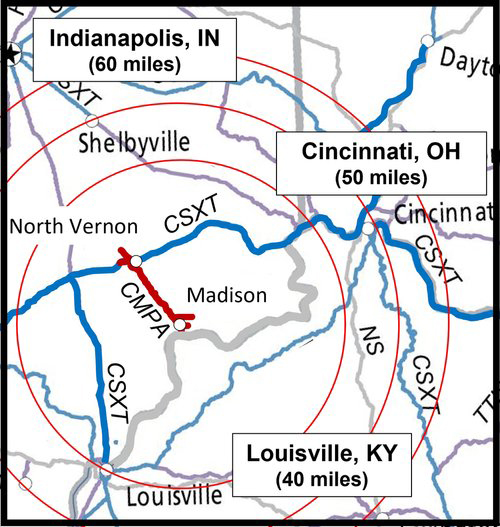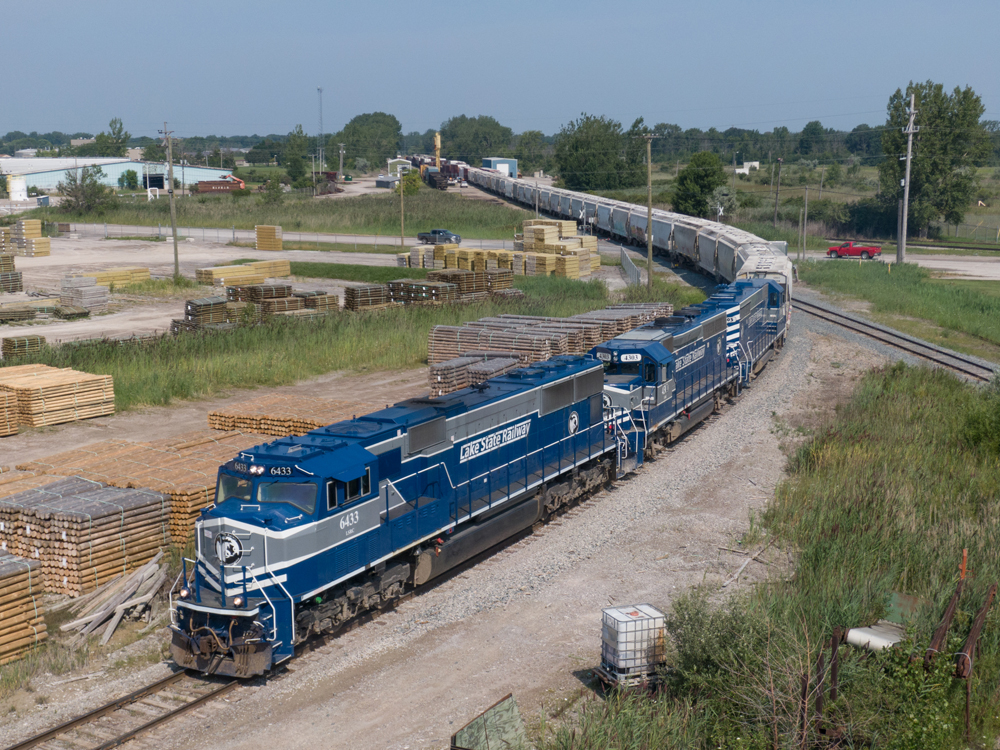WASHINGTON — Short line railroads across the United States will be able to lay more welded rail, replace more crossties, add sidings and build bridges as a result of $2.4 billion in funding through the Federal Railroad Administration’s Consolidated Rail Infrastructure and Safety (CRISI) grant program for fiscal years 2023-2024 [see “FRA awards $2.4 billion …,” Trains News Wire, Oct. 29, 2024]. For small, independent, and family-owned short line railroads, the CRISI grant funding is a godsend, helping stretch the dollar and enabling transformational projects that otherwise would be piecemealed or deferred.
Short lines are some of the biggest benefactors in the FRA’s latest funding round — involved in 81 of the 122 projects awarded funds. Short lines will see $1.2 billion in investment as a result of the program.
One of those railroads is Michigan’s Lake State Railway. The railroad is receiving $27.1 million to replace 52 miles of jointed rail with continuous welded rail, replace crossties, improve 34 grade crossings, update signals at 13 crossings, and replace turnouts on its Huron Subdivision between Pinconning, Mich., and Alpena, Mich. The railroad and the Michigan Department of Transportation will provide a 51% match.
Michael Stickel, the railroad’s president and CEO, says the rebirth of the Huron Subdivision is a continuation of investment over the last decade, made possible by a previous CRISI grant awarded during 2019’s fiscal year.
“The Huron [Subdivision] was one of the longest stretches of FRA excepted track in the country at over 100 miles,” says Stickel. “Once complete, the entire run from the north side of Bay City to Alpena will be a Class II or Class III railroad with the exception of yard limits in Tawas, Pinconning, and Alpena.
“Without this CRISI grant, the completion of the rebuild would take another decade or more. [Lake State Railway] is leveraging $24 Million of our own funds as part of this grant. Once complete, the Huron will be able to support anticipated growth for decades to come.”
The railroad is also completing a nearly $5 million rebuild of its 3-mile Alabaster Spur, dormant for more than a decade. The branch line will support significant growth in the movement of rock gypsum for out-of-state wallboard plants.
Stickel says investments by two other customers in the Alpena area will drive additional carload growth next year.
“A decade ago, total volume on the Huron Subdivision was approximately 2,500 carloads. In the last several years, volumes have nearly tripled,” he says. “We expect to see that growth trend continue as gypsum, stone, and cement volumes continue to grow.”
Stickel says the Huron Subdivision used to be almost entirely 85-pound and 90-pound rail.
“The CRISI program allows us to make critical infrastructure investments, which help Michigan customers reach the national marketplace competitively while lowering truck traffic on congested U.S. 23,” Stickel emphasizes.
Some 750 miles away in North Carolina, the family-owned Aberdeen Carolina & Western Railway is receiving $18.2 million to replace jointed rail with continuous welded rail line on its line between Charlotte and Oakboro, N.C., as part of the Piedmont Subdivision it purchased from Norfolk Southern in late 2022.
The new 136-pound rail will accommodate new industry-standard 286,000-pound railcars and allow the short line to increase train speeds.
“That part of our line pretty much averages about 10 mph, and with [the CRISI grant] we will be able to get it up to 25 mph,” says Paul Hoben, director of business development at ACWR.
Much of the rail on the Piedmont Subdivision was installed in the mid-20th century and while the ACWR has improved sections of the line while leasing it from NS, this year’s CRISI funds will allow the short line to beef up this newly purchased section of railroad to attract more carloads, and increase safety and reliability — ticking each of the boxes CRISI is designed to support.
The 26-mile Madison Railroad, owned and operated by the City of Madison Port Authority in western Indiana, received a hugely significant $5.9 million CRISI grant to replace the 130-year-old North Muscatatuck River Bridge in Vernon, Ind. The railroad’s revenue depends solely on carload freight and storage.

“We’ve embarked on a lengthy journey over the past twenty years to rebuild four bridges on our line and this grant allows us to complete the last one,” says Adam Robillard, Madison’s general manager.
It is the railroad’s second CRISI grant. The first was awarded in 2022 to rebuild the Graham Creek Bridge.
“The completion of that bridge replacement jumpstarted a resurgence in carload growth and rail investments along our line which was celebrated this past June during a ribbon cutting ceremony for five new rail customers in Madison,” says Robillard, adding that those new customers created 42 new jobs.
“Prior to that bridge project, we were unable to handle 286k carloads or guarantee our ability to handle increased carloads due to the fragile state of the bridges on the line,” he adds. “The current CRISI grant is a massive game changer for our railroad and will, for the very first time since acquiring the property from Penn Central, put all of the bridges on our line in a state of good repair.
“Frankly, we would be financially unable to construct this bridge without CRISI and the FRA’s support. The line’s future was very much in question if we were unable to find a funding partner for this project. We’re thankful to the FRA for their support of rail infrastructure and most importantly for supporting small business, such as ourselves, who rely on this support for our very existence.”
Current legislation through the bipartisan infrastructure bill, or the Infrastructure Investment and Jobs Act, allows CRISI appropriations to continue at current funding levels through fiscal year 2027.

